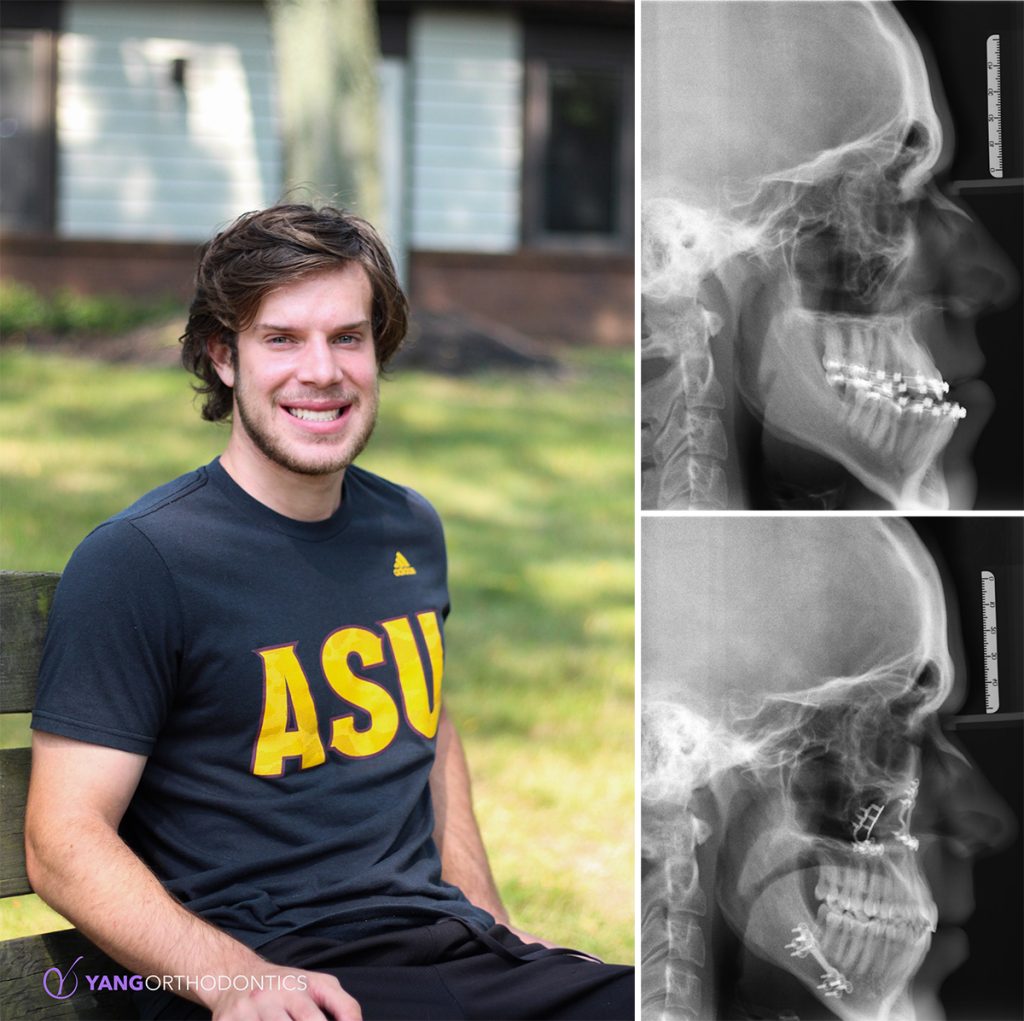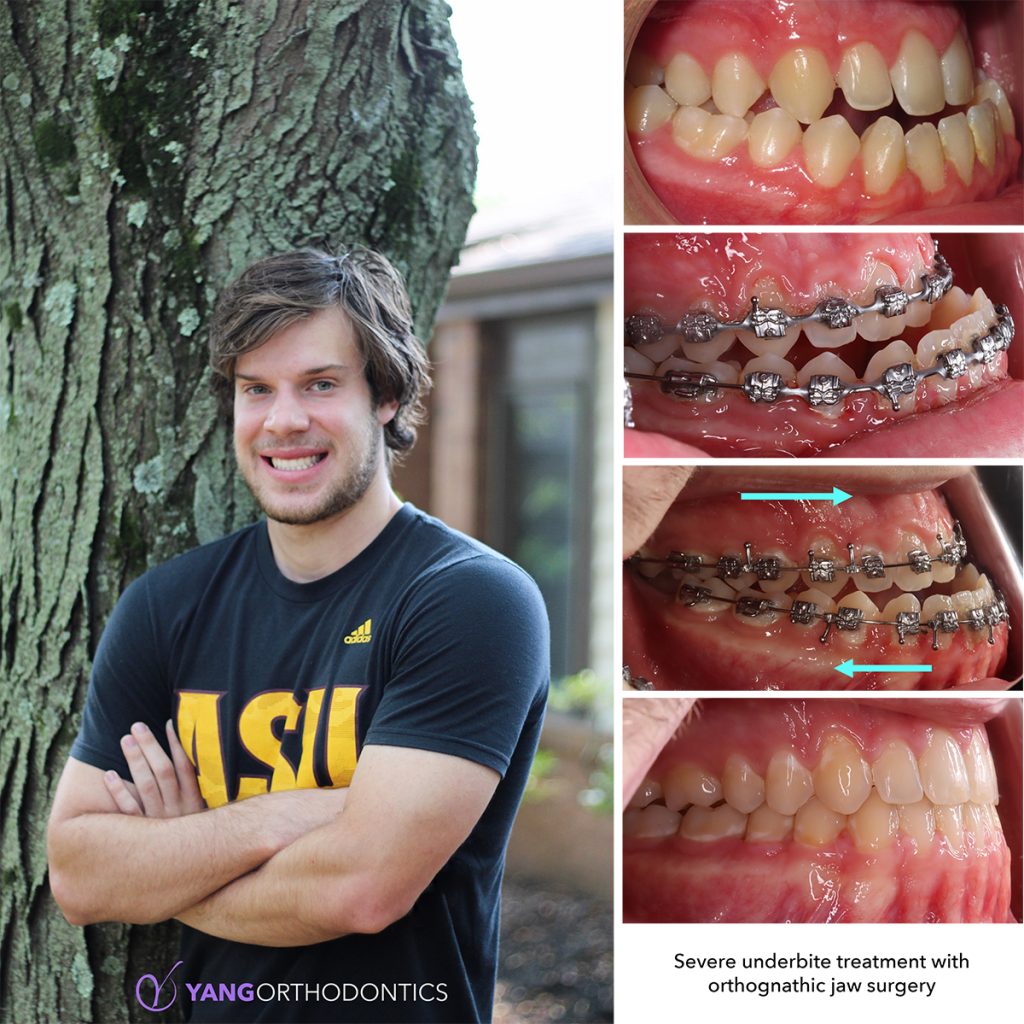Surgical orthodontics, also known as orthognathic (or-tho-nah-thic) surgery or jaw surgery, is a type of orthodontic treatment used to correct severe cases that include bad bites, jaw bone abnormalities, and malocclusion. It is performed to help align the upper jaw (maxilla) and lower jaw (mandible). If the jaws don’t line up, it can affect the bite and make it hard to eat and speak.
Why Would I Need Surgical Orthodontics?
Orthognathic surgical procedures are generally recommended for adults with a severe case of dentofacial deformities that cannot be corrected by orthodontic treatment alone. Sometimes surgical orthodontics may be needed for those whose jaws are injured in an accident, or to correct a birth defect. Dr. Yang will not recommend surgery unless it is absolutely necessary.
Why would Surgical Orthodontics be Necessary?
Unlike children, adults are no longer growing, so the only way to modify the size or shape of an adult’s jaw bones is through surgery. Corrective jaw surgery is only performed on patients who have finished growing. It corrects problems caused by genetics, birth defects, injuries to the jaw, or environmental causes.
What is Surgical Orthodontics and Treatment Like?
Orthognathic surgery isn’t a single event within a treatment plan. Orthodontic treatment is done before and after surgery so that upper and lower teeth meet properly after the surgery is performed. It is very unlikely that a surgical treatment alone would correct both misaligned teeth and misaligned jaws. Surgery is performed by an oral and maxillofacial surgeon, who works in conjunction with your orthodontist – Dr. Yang. The two specialists work as a team to design and execute your plan of care.
What is an Orthognathic Procedure Like?



Surgery can usually be performed inside your mouth, so no facial scars show on your chin, jaw or around the mouth. However, sometimes small incisions may be required outside your mouth. Jaw surgery may be performed on the upper jaw, lower jaw, chin or any combination of these.
Your surgeon makes cuts in the jawbones and moves them into the correct position. When the movement is completed, very tiny bone plates, screws, wires and rubber bands may be used to secure the jawbones into their new position. These very small screws become integrated into the bone structure over time.
In some cases, extra bone may be added to the jaw. Your surgeon transfers the bone from your hip, leg or rib and secures it with plates and screws. In other cases, bone may be reshaped to provide a better fit.
The ultimate goal of surgical orthodontics is to achieve a functional, healthy bite. Like any orthodontic treatment, there’s an aesthetic outcome that goes along with the bite correction. Orthodontic patients get a more aesthetically pleasing smile with a corrected bite and straighter teeth. Bite correction can also change side profiles to a more desirable look.
To see if your case would require surgical orthodontics, click here to schedule your free consultation, or give Yang Orthodontics a call at 215-757-0864. You can also text us!

